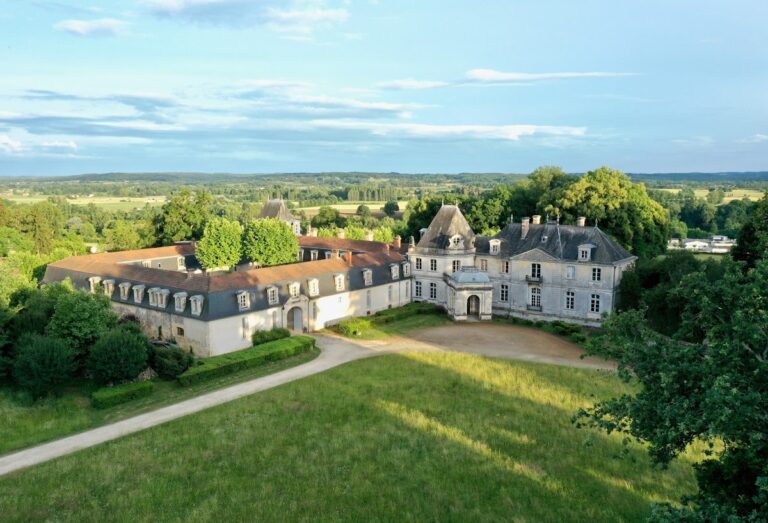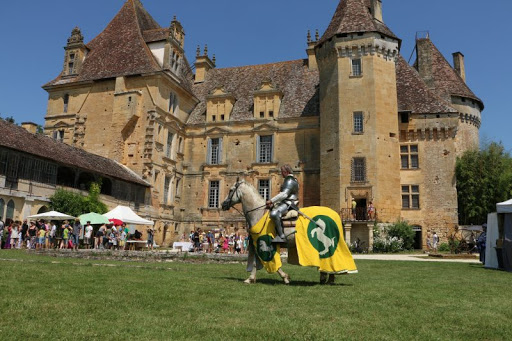Château de Monbazillac: A Historic Castle and Wine Estate in France
Visitor Information
Google Rating: 4.2
Popularity: Medium
Google Maps: View on Google Maps
Official Website: www.chateau-monbazillac.com
Country: France
Civilization: Unclassified
Remains: Military
History
The Château de Monbazillac is located in the town of Monbazillac, France. Constructed in the mid-16th century, the castle was established by the d’Aydie family, a noble lineage rooted in the region. François d’Aydie founded the château around 1550, inheriting the lands from his mother Anne de Pons, who had acquired them in the 15th century.
During its early years, the château endured a turbulent period in French history marked by religious conflicts and social unrest. It withstood the French Wars of Religion in the late 16th century as well as peasant uprisings in the surrounding Périgord region. Despite widespread destruction elsewhere, Monbazillac avoided damage during the French Revolution, indicating a degree of preservation uncommon for many noble estates. The castle also escaped major renovations or alterations during the 19th century, maintaining much of its original form.
In the early 17th century, ownership passed to Louis Bouchard d’Aubeterre, who received the property as a reward for his military service to King Henry IV. Under the king’s reign, Monbazillac was elevated to a viscounty in 1608, reflecting increased prestige. Later, in the 17th century, the castle came under the possession of the Protestant Barraud family. Marie de Barraud, a notable member, formally renounced her Protestant faith in 1685 in order to marry into a Catholic noble family, a decision reflecting the religious tensions of the era.
Throughout the 18th century, the de Bacalan family held the château. They successfully maintained the estate during the upheaval of the Revolution, safeguarding it from confiscation or destruction. By the 19th century, the last titled lords were the Lapoyade de Piquetterie family, who continued the tradition of stewardship. In the following century, Jean Eyma, a Protestant of bourgeois origins and an active political figure, became the owner. Since 1960, the château has been managed by the Monbazillac wine cooperative, aligning its legacy with the surrounding vineyards.
Officially recognized as a historic monument in 1941, the Château de Monbazillac now serves as a cultural site preserving the history of the region and reflecting centuries of noble and agricultural life.
Remains
The Château de Monbazillac is constructed on a straightforward rectangular plan anchoring four large circular towers positioned at each corner. This layout blends medieval military architecture with early Renaissance influences, pairing defensive necessity with emerging stylistic features from the 16th century. The castle’s defensive components include a surrounding moat and machicolations, which are openings in projecting parapets through which defenders could drop objects or fire upon attackers. Additional elements such as arrow slits, battlements along the roofline, and a guarded walkway supported its fortified character. Access to the château is granted by a fixed bridge featuring two stone arches which replace the traditional drawbridge, providing a permanent entrance.
The castles’ wide windows combine Renaissance design sensibilities with functional mullions—vertical bars dividing window panes—that introduce light while preserving structural integrity. Its roof is notable for a distinctive structure typical of the period, while inside, a broad interior staircase with one-sided railings connects the floors, reflecting evolving tastes in domestic architecture beyond mere defense.
Within the château, the Grande Salle contains a prominent Renaissance fireplace of monumental scale, around which 17th-century furniture and tapestries have been displayed, illustrating the domestic life of the castle’s historical occupants. On the first floor, a bedroom showcases decoration associated with the Louis XIII style, combining elegance with historical furnishings.
The castle also houses several museums that display an array of regional artifacts, including local furniture styles, historical seals, old maps, and medals. Among these exhibits are caricatures from the Belle Époque period, offering insight into cultural life, as well as a specialized collection documenting Protestant history in the nearby town of Bergerac. Additionally, the vaulted cellar beneath the château serves as a wine museum, containing traditional winemaking equipment alongside a collection of bottles dating from the 18th and 19th centuries, underlining the longstanding connection between the estate and viticulture.
The château sits prominently on a plateau overlooking the Dordogne River, with its surrounding vineyards covering approximately 22 to 25 hectares. These vineyards benefit from clay-limestone soils that provide ideal conditions for producing Monbazillac’s renowned sweet white wines, linking the site’s architectural and historical significance to its enduring agricultural heritage.










